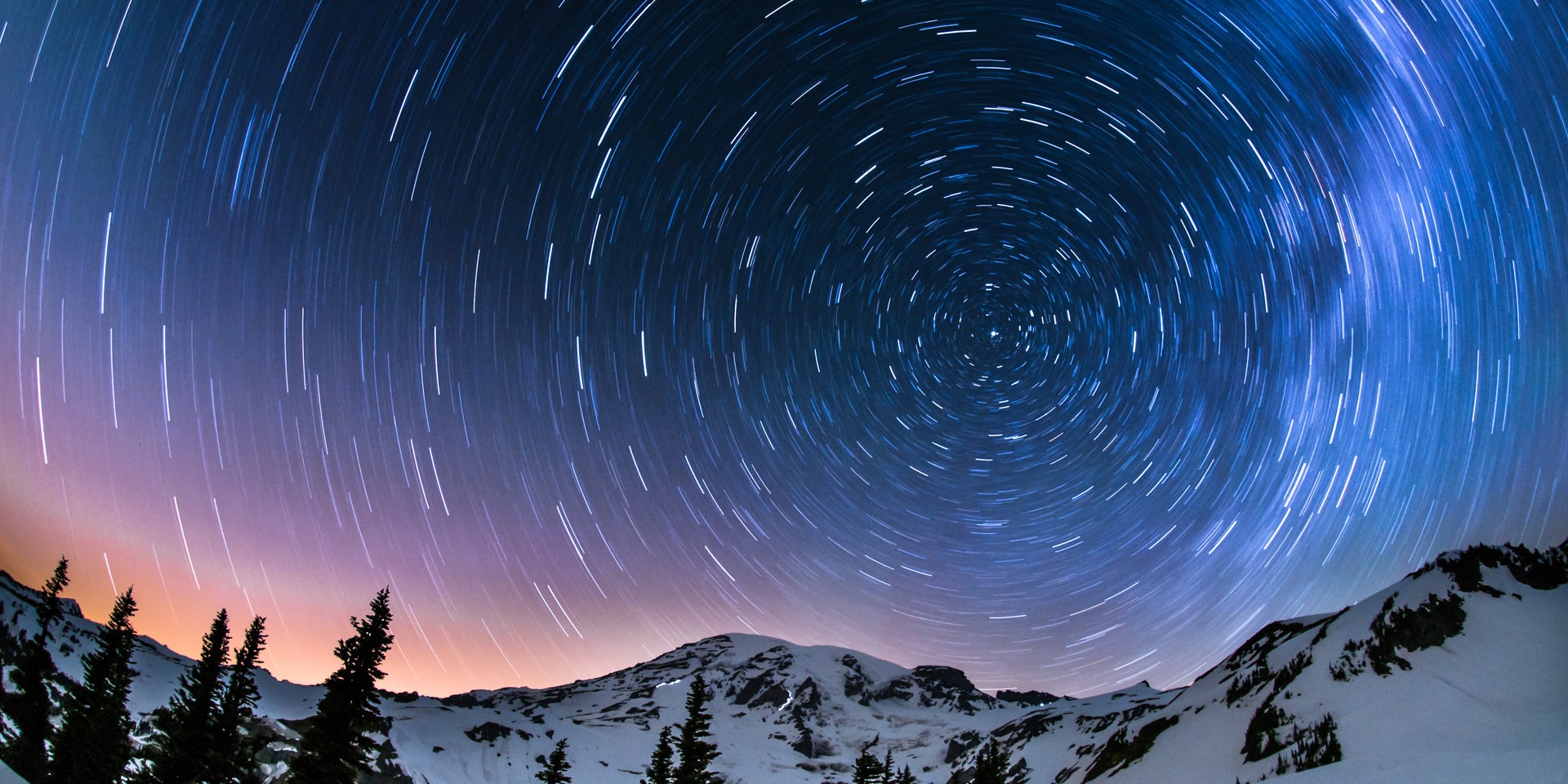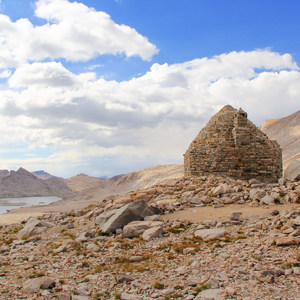We have many things to be thankful for this holiday season, but as adventurers we should take an extra second to reflect on what we should be grateful for all year long, every time we venture into the outdoors. It may be easy to take for granted things like public access, maintained hiking trails, and campsites, but it's important to be thankful for who creates them, and for us to be informed and responsible so we can ensure that they remain. Here is a list of 12 great privileges we are grateful for along with links to adventure descriptions so you can get out there and #AdventureLikeYouGiveADamn
1. U.S. Public Lands
Vast amounts of the United States, especially in the West, are owned by federal agencies and open for public use. This truly means they are open for recreation to anyone, and most of the time for free. There are, of course, still rules to guide usage, and these vary according to which agency administers the land. See our overview of Use, Protection + Management of Public Lands to learn about where they are and how they work.
2. The National Park System
The most well-known public lands are the national parks, which have been established around some of the most iconic and impressive American landscapes. The National Park Service is a federal agency that is charge of 417 "units" that include the 59 national parks as well as national monuments, seashores, lakeshores, historic sites, recreation areas, scenic rivers, and more. They are located in all 50 states plus most U.S. territories. Check out our overview of the park system, our idea for the Ultimate Western National Parks Road Trip, or any of the individual National Park Descriptions on Outdoor Project.
3. Wilderness
The term "wilderness" evokes different images for different people. In the United States there is actually a legal definition for the word, and wilderness areas are specially designated federal lands that are afforded the most preservation of any other public land. In wilderness areas there is no logging, no mining, no motorized vehicle access, no drone activity, no power tool usage, and no road development. Even bicycles aren't allowed. Venturing into the wilderness ensures a solitary experience for just you and your friends, your dog, and maybe your horse. There are currently 765 official wilderness areas covering more than 100 million acres. There's no way to pick the best, but some suggestions are Washington's Alpine Lakes Wilderness, Oregon's Three Sisters Wilderness, Colorado's Indian Peaks Wilderness, and North Carolina's Joyce Kilmer-Slickrock Wilderness.
4. National Scenic Trails (and other long-distance hiking trails)
There are 11 National Scenic Trails in the country, including household names like the Appalachian Trail, Continental Divide Trail, Pacific Northwest Trail, and Pacific Crest Trail. Many people don't realize the special federal protection placed on these especially long and beautiful footpaths that traverse multiple land jurisdictions, as their designation actually requires an act of Congress. Any long-distance trails are a great gift from land managers and dedicated laborers even if, like the John Muir Trail, they aren't officially designated.
5. State Parks and other Protected State Lands
While national parks often steal a lot of the limelight, state parks and recreation areas are actually one of the nation's most popular outdoor destinations. Most offer excellent day hiking, comfortable camping, picnic areas and a plethora of family-friendly activities like nature centers, playgrounds, sports fields, swimming, horseback riding, and more. Every park is unique, and each state has its own system. Take the time to explore what's near you and find your favorite. Some suggestions in the West are Washington's Flaming Geyser State Park, Oregon's Ecola State Park, California's Emerald Bay State Park, and Utah's Antelope Island State Park.
6. Wildlife Refuges
The U.S. Fish and Wildlife Service is in charge of more than 150 million acres of land set aside for wildlife habitat. These are areas known to be crucial for migrating birds, sensitive fisheries, big game animals, valuable wetlands, or otherwise important ecological hotspots. These sometimes occur in places you wouldn't expect, like Ridgefield National Wildlife Refuge right outside of Portland. In fact, nearly every metro area in the U.S. has some wildlife refuge within less than one hour's drive. One particularly special refuge is Ash Meadows in Nevada, a literal oasis in the desert that is home to species found nowhere else on earth.
7. Starry Skies
Dark night skies are the the classic case of "you don't know what you've got until it's gone, and you don't know what you're missing until you find it." City dwellers often don't even think about looking upward at night because there's nothing to see, but camping on top of a mountain away from light pollution suddenly opens up a whole new world, universe even. By contrast, rural residents often don't spend enough time admiring the night sky, even though they have the privilege of living beneath it. Let's all take the chance to be thankful for wide open spaces and dark skies when we get it.
8. Leave No Trace Ethics
Out of the many groups of people we can thank for outdoor experiences, one of the most important is ourselves. When we practice good ethics of minimizing impact on the places we visit, we help preserve the beauty and authenticity of the adventure for ourselves and others in the future. Take a moment to learn about or refresh yourself on the Seven Principles of Leave No Trace.
9. Outdoor Safety Education
As fun as it is to get outside, there are inherent risks that we take by being adventurous. However, there are ways to minimize these risks and be prepared for challenges. We are thankful for the plethora of resources on outdoor safety like books, clinics, wilderness medicine, first aid kit technology, backcountry map apps, park rangers, firefighters, search and rescue, and sharing of personal experience that can help keep us safe. A good starting point is our guide to 10 Essentials of Outdoor Adventure Safety, Backcountry Skiing and Avalanche Safety, or tips for Adventuring in Bear Country.
10. Ecological Restoration
In the pursuit of our own human needs, we have unfortunately degraded many natural systems. More and more, however, we are re-discovering how much we need nature as well. Finding a balance is crucial, but difficult. We are thankful for the numerous federal agencies, nonprofit groups, businesses, and everyday people who devote themselves to healing the environment, restoring its former beauty, and finding that balance so we can work, play, and thrive among nature. See how restoration efforts are helping wild salmon, Oregon's wolves, and the San Francisco Bay.
11. Family-friendly adventures
Parents know no greater gratification than sharing an amazing experience with their children. We are thankful for the numerous opportunities to get outside with the family and instill a sense of wonder for the world in our kids. Youngsters often have an affinity for being active, exploring, and getting dirty, and the outdoors provides a healthy channel for that energy to develop into a passion for living life to the fullest.
12. Giving a Damn
At Outdoor Project, we value nothing more than the opportunity to get outside, and we believe it's one that everyone should have. There is a lot out there, but ensuring the beauty and integrity of the places we love, and the places we haven't yet discovered for ourselves, requires teamwork to respect and protect the land and others who enjoy it. We believe the three pillars are Inspiration, Knowledge, and Action--without which our outdoor adventures could be at risk. Please join us in our pledge to Adventure Like You Give A Damn.







Comments
Sign In and share them.